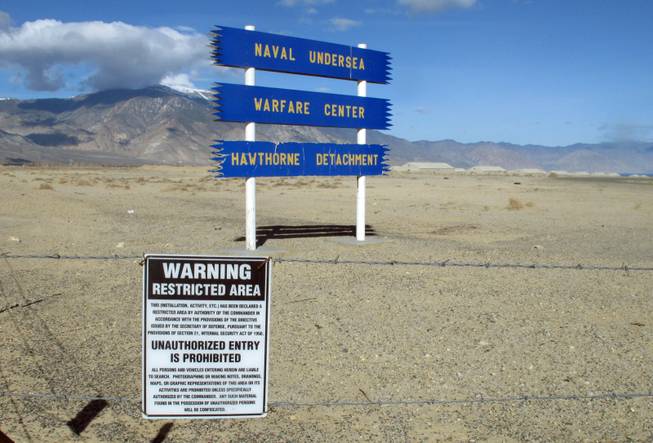
Scott Sonner / AP
Signs are seen at the Hawthorne Army Depot, where seven Marines were killed and several others seriously injured in a training accident March 18, 2013, about 150 miles southeast of Reno in Nevada’s high desert.
Published Wednesday, Jan. 22, 2014 | 2:29 p.m.
Updated Wednesday, Jan. 22, 2014 | 2:41 p.m.
RALEIGH, N.C. — An explosion that killed seven Camp Lejeune Marines during a nighttime training exercise was the result of human error and insufficient training, according to the results of a military investigation.
Lt. Adam Flores, a spokesman for the Lejeune-based 2nd Marine Division, said Wednesday that the investigation found the deadly March 18 explosion was triggered when a Marine dropped a second round into an already loaded mortar tube during a live-fire exercise. Two officers and a noncommissioned officer were relieved of command following the explosion at Hawthorne Army Depot in Nevada.
Those killed ranged in age from 19 to 26. Seven additional Marines and a Navy sailor were also wounded in the blast.
The investigation determined that the 60 mm mortar functioned properly and that the weapon system is safe when used as designed by properly trained Marines. Marine officials said last year that the explosion was the result of "human error," but did not provide details of what caused the blast.
Flores said Wednesday that the Marines were firing the 60 mm mortar in "manual mode," meaning someone had to pull a trigger to set off the round. The weapon can also be set up in a fixed position and fired by simply dropping a round down the tube.
"There was a round that was already in and they had begun to feed the second round in before the first mortar (round) had been fired," Flores said.
The investigation's findings were first reported Tuesday by The Marine Corps Times, which obtained a copy of the 19-page report and hundreds of pages of supporting documents through a Freedom of Information Act request.
The Marine investigation concluded that four factors contributed to the tragedy: inadequate training and preparation for the complexity of the exercise; improper mortar gunnery commands and firing procedures; a "perceived sense of urgency and resultant haste" during the exercise; and a systemic lack of supervision.

Join the Discussion:
Check this out for a full explanation of our conversion to the LiveFyre commenting system and instructions on how to sign up for an account.
Full comments policy